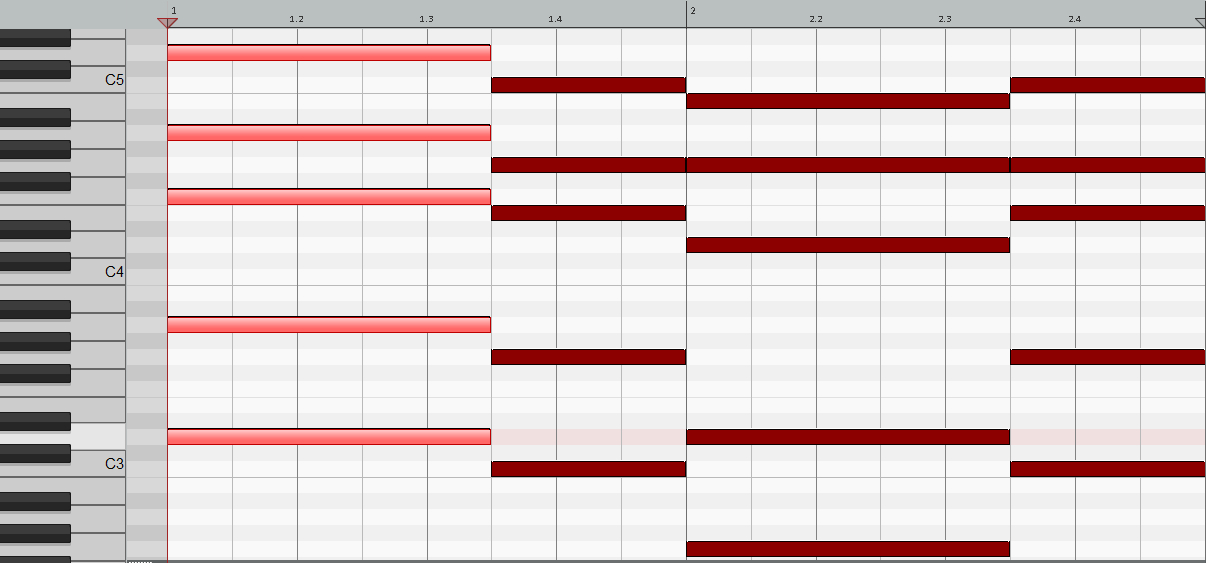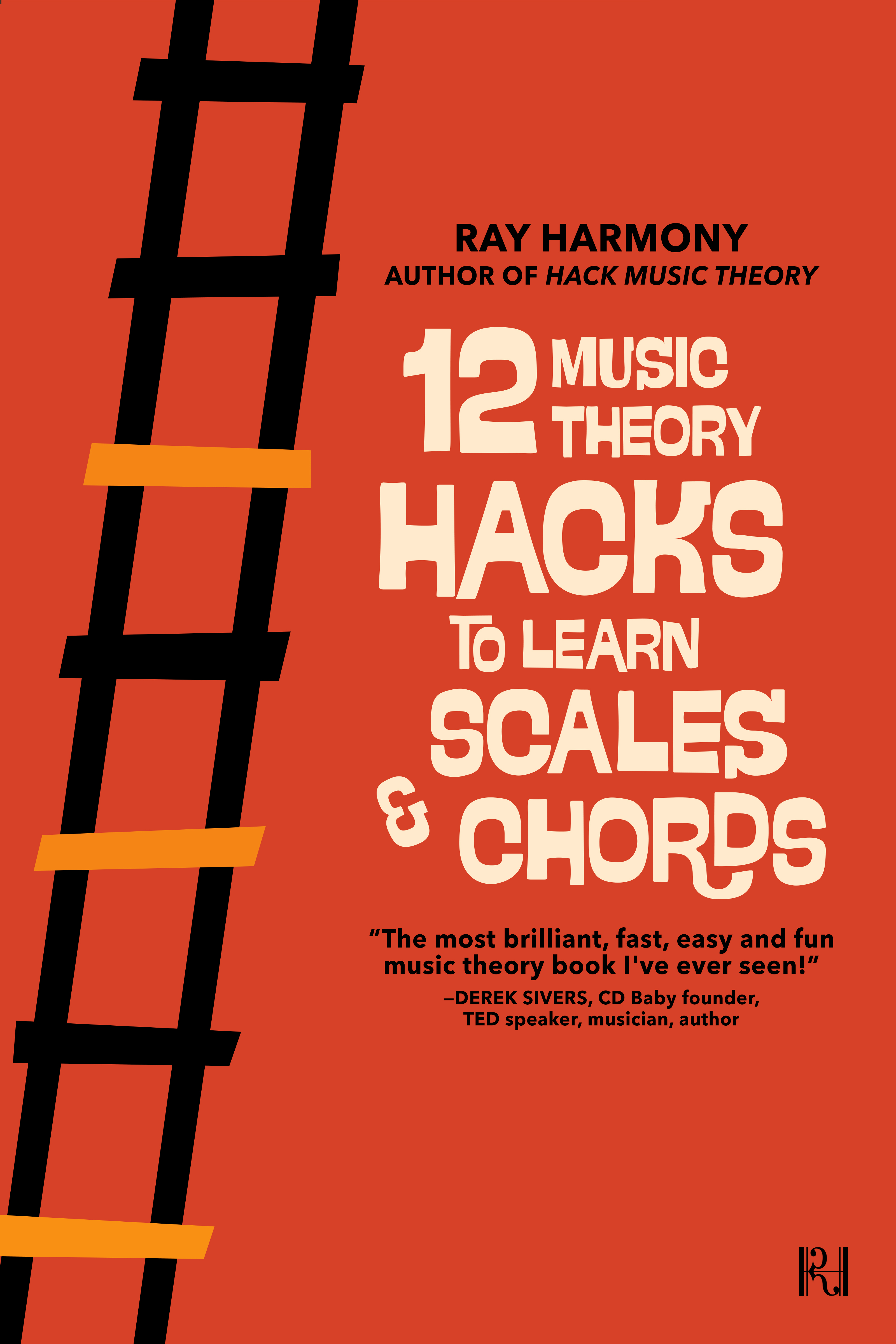Alex from Montreal asked the following question in the comments of our Hack-A-Hit video on The Chainsmokers: “In your other videos you emphasized always starting your modes on their root chords, because that gives the listener a sense of where the home is. In this chord progression, the root chord (Fm) starts on the third chord, shouldn’t it be the first chord of the progression? Feeling super confused!” Thank you Alex, and please rest assured that we’ll have your confusion cleared up by the end of this video. I’ve got an example lined up for you in my DAW, but first, here’s my one-sentence answer:
When you’re in Ionian (AKA the major scale) or Aeolian (AKA the minor scale), like that Chainsmokers song, you can get away with putting the root chord anywhere because our ears are so used to hearing those modes, but when you’re in the other five “forgotten” modes, it’s vital to establish the root as it’s way harder for our ears to recognise those modes.
Let’s jump right into the example now. So here’s that chord progression in “Closer” by The Chainsmokers. First things first, we’re gonna use the white note hack to get rid of all the black notes, so it’s easy to analyze. As this chord progression is in a minor key, we select all the MIDI and move its root chord (Fm) up to A, because in A minor there are no sharps or flats. Remember, after using the white note hack, you can just select all the MIDI again and move it to whatever key you want. So, here is the chord progression in the key of A minor: Fmaj(add9) → Gmaj → Am7 → Gmaj, and the spelling of that chord progression is: ♭VI → ♭VII → I → ♭VII.
And as Alex wisely observed, the root chord is played third in this progression (highlighted in the above MIDI screenshot). Even though they wait until the third chord before revealing the root, our ears are so familiar with Aeolian, that there is absolutely no doubt what the home (i.e the root) of this chord progression is. This is a great example of how we can get away with putting the root chord anywhere in Ionian or Aeolian chord progressions.
However, as the five other modes are so unfamiliar to our ears, when we’re trying to get our listeners to recognise those other modes and feel their emotions, it’s vital that we anchor each chord progression deeply into its root chord. You still don’t necessarily need to start on the root chord, but, whatever chord is played first in your progression has the prime spot, so playing the root chord first in a progression is certainly a very good way to establish its home.
Let’s move this chord progression into Dorian now, to test it out in one of the five other modes. So, using the white note hack, we move the root chord from A to D, as D Dorian has no black notes. Okay, so we can see there’s a black note here, B♭, so that will need to move up to a B♮. That’s the ♭6 of Aeolian moving up to the ♮6, which is the very note that makes Dorian different. Now, as the B chord in Dorian also happens to be the rather unpleasant diminished chord, we’ll just move that B chord down to an A chord. So we move the root of that chord, B, down to A, and the 5th, F, down to the 5th of A, which is E. There’s also this other F here, which we can move up to A. And then the 3rd of that B chord was D, so we move that down to the 3rd of the A chord, which is C. And lastly, if we still want to start with that add9, we can move the C down to a B over here, which also emphasizes the Dorian mode, as that B would be a B♭ if this was Aeolian.
Okay, now that we’ve got the equivalent chord progression in D Dorian, we need to ask ourselves the most important mode question of all: Are my listeners hearing and feeling the mode that I’m wanting them to hear and feel? In this example, that question is essentially: Are my listeners hearing D as the root? If they’re not, then this chord progression is not in Dorian, and is in fact in a relative. Remember, the best hack for finding the root chord is to test which chord the song wants to end on, as that chord is what our ears are hearing as the root. In this chord progression, there’s absolutely no doubt that our ears are hearing this Am chord as the root. So, this means we’ve failed Dorian, as our listeners are not hearing D Dorian, they’re actually hearing the relative, A Aeolian. This is by far the most common problem musicians have when using the five other modes: Their music accidentally ends up sounding like the relative Ionian or Aeolian, and not the mode they intended.
Now, simply by starting this chord progression on the Dm chord, we already help in establishing that D as the root. So let’s cut this chord progression in half and begin on the second half instead, so we now start on D. Yep, that’s way better already, but, it’s not quite enough yet. We also need to play the specific chord that emphasizes the specific mode we’re in. For more on which chords to play in which modes, please download our Hack Music Theory for Songwriting & Producing PDF.
In Dorian you always want to play the 4th chord, as that 4th chord is usually a minor in Aeolian, but in Dorian it becomes a major chord. That deviation from the norm (i.e. Aeolian) is exactly what grabs the attention of our ears and alerts them to the fact that we’re not in Aeolian now. The 4th chord in D Dorian is Gmaj, so we need to play a Gmaj somewhere in this chord progression, and the most obvious spot for it would be in place of the Am chord. The reason for this, is because that Am chord is tricking our ear into thinking this progression is in its relative, A Aeolian, so let’s just replace that Am with a Gmaj, which consists of the notes G B D, and we’ll double the 1 and 5 in the left hand to match the other chords. As soon as you hear this B (the 6 in D Dorian), it’s obvious that you are not in Aeolian, as that note is the silver lining to our cloud, which you only get in Dorian. In other words, our ears are expecting a Bm here, because that’s what we’d get if we were in Aeolian, but instead we get a Bmaj, revealing the Dorian mode.
Finally, to make it even more obvious that D is the root, we can move the C (♭7) on top of our Dm chord up to the root, which releases that tension and makes the D sound final. Remember, 7s always create tension as they want to resolve up to the root, so don’t use them on your root chord when you’re trying to establish it as the home.
Before we wrap up, I just want to say once again that you don’t have to start your Dorian, Phrygian, Lydian or Mixolydian chord progressions on the root chord, but it sure does help with establishing the home. Other ways you can establish a chord as the root elsewhere in the progression, is by playing it longer than the other chords, or by repeating it within the chord progression.
Last but not least, the fun part: I added some bass and drums to the chord progression, and of course a bit of synth too. Now that we’ve worked so hard to ensure the D is being heard as the root, you’re really going to be able to feel that sad but hopefully Dorian personality shining through. Let’s take a listen (it's at 10:17 and again at 11:12 in the video/podcast).
So that’s my answer! Thanks for watching, and if you’d like to learn more about writing chord progressions in the other five modes, please download our Hack Music Theory for Songwriting & Producing PDF. Do you feel a little bit smarter now than you did a few minutes ago? Then subscribe so we can do it all again next week! And if you have a question you’d like us to answer here on Q&A Tuesday, please comment below or connect with us.
Kate Harmony
Music Teacher
Victoria BC, Canada
 | |
Wooohooo!!! You're a mere 30 minutes away from being even smarter than you already are. Just head over to your inbox now for your free download.
